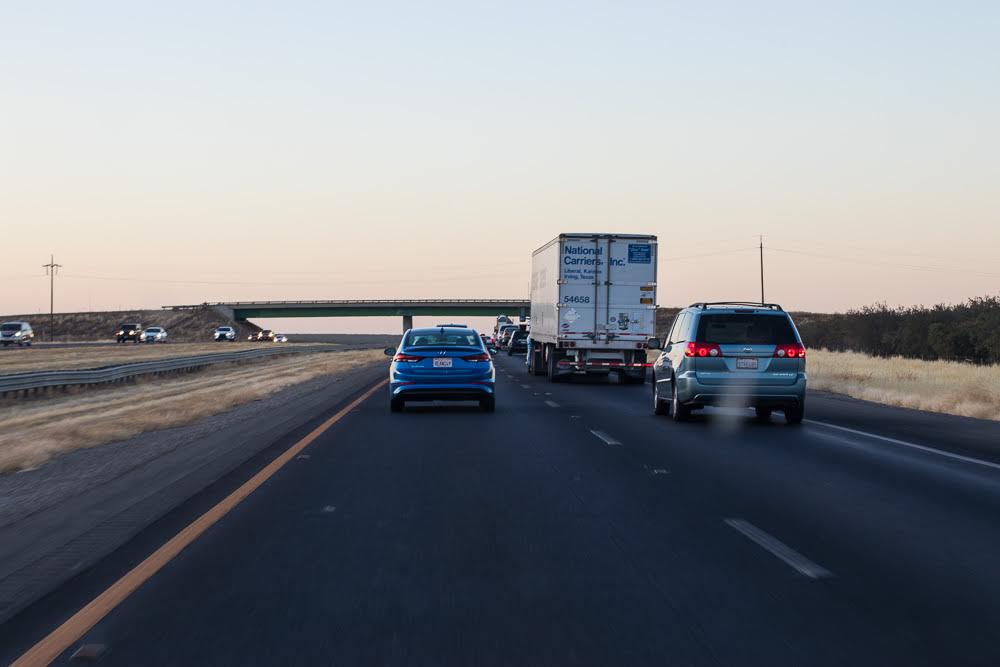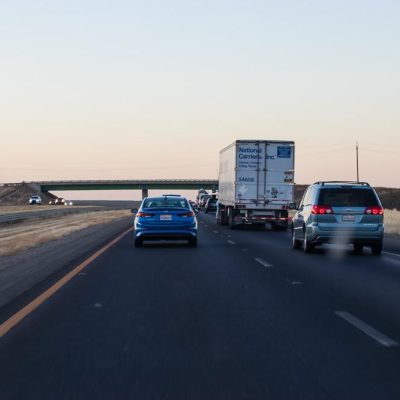
How Traffic Congestion Affects Accident Rates on I‑81


I-81 is a vital highway that stretches from Tennessee to New York, connecting several states and cities. It serves as an important route for both local commuters and long-distance travelers, but it also presents significant risks during periods of heavy traffic congestion. When traffic is at its peak, such as during rush hour or busy holidays, the risk of accidents increases significantly. Drivers face a higher chance of rear-end collisions, sudden lane changes, and accidents caused by poor visibility or confusion in areas of heavy congestion.
Certain areas of I-81 are more prone to traffic slowdowns, particularly near major cities like Harrisburg, PA, and Roanoke, VA, as well as construction zones. These areas tend to experience the worst congestion, which increases the risk of accidents. Heavy traffic is most common during morning and evening rush hours, typically from 7-9 AM and 4:30-6:30 PM.
To reduce the risk of accidents, drivers should maintain a safe following distance, stay calm, and avoid aggressive driving behaviors. Checking traffic reports before heading out and adjusting travel times to avoid peak congestion can also help. Staying alert and minimizing distractions, such as avoiding phone use while driving, is crucial to staying safe.
In conclusion, while I-81 is an essential route, heavy traffic during peak hours increases the likelihood of accidents. By staying aware of high-congestion areas and practicing safe driving habits, drivers can reduce their risk and make their travels safer.
Understanding the Impact of Traffic Congestion on Accident Risk
Heavy traffic is a key factor in increasing the risk of accidents. As traffic builds up, the chance of accidents grows due to several reasons.
When traffic is congested, drivers tend to become frustrated and stressed. This leads to aggressive driving behaviors such as tailgating, speeding, and lane changes without signaling. Drivers may take risks to reduce travel time, but this only increases the chances of a collision. Stress and impatience can cloud judgment, which leads to dangerous decisions on the road.
In congested traffic, vehicles often move slowly or come to a complete stop. When the traffic starts moving again, drivers may struggle to adjust quickly. This reduced reaction time can lead to rear-end accidents, especially in stop-and-go traffic. A momentary distraction or a brief lapse in attention can result in a crash, particularly when vehicles are too close together.
Congestion reduces visibility, especially in areas where traffic is heavily backed up. Drivers may find it difficult to see other vehicles or pedestrians in their path, particularly at interchanges and exits. This can lead to sudden lane changes, missed turns, or accidents. Navigating through these areas requires heightened awareness, but often, drivers are distracted or overwhelmed by the sheer volume of traffic.
Worst Times for Traffic Congestion on I-81
Certain times of the day and certain days of the week see more traffic on I-81, making congestion and the risk of accidents more likely.
Weekday rush hours are the peak times for traffic on I-81. Morning rush hour typically runs from 7:00 to 9:00 AM, while the evening rush hour stretches from 4:30 to 6:30 PM. During these hours, commuters flood the highway, particularly in urban areas. This high volume of traffic, combined with drivers who are often in a hurry, makes accidents more likely.
On weekends, I-81 also sees increased traffic, especially on Fridays and Sundays. Many people use the highway to travel for leisure, leading to congestion. This is particularly true during the summer months and holiday weekends, such as Thanksgiving or Memorial Day. Drivers heading to vacation destinations or family visits can create significant bottlenecks on the highway.
Certain locations on I-81 are prone to traffic congestion due to special events or construction zones. When large events are held near the highway, such as festivals or sports events, traffic often backs up around interchanges. Similarly, construction projects and roadwork can reduce lanes, forcing more vehicles into fewer spaces. These slow-moving zones increase the chance of accidents, especially if drivers are not paying attention to construction signs or traffic detours.
Locations on I-81 with High Risk Due to Traffic Congestion
Several locations along I-81 experience heavy congestion more frequently than others, increasing the risk of accidents in these areas.
The interchanges where I-81 intersects with other highways are high-risk areas. For instance, near the junction of I-81 and I-64 in Virginia, traffic congestion is common. Multiple exits and on-ramps lead to confusion and bottlenecks, making it harder for drivers to maneuver safely. Drivers merging onto I-81 often struggle to find gaps in traffic, heightening the potential for crashes.
Areas around larger cities, such as Harrisburg, Roanoke, and Winchester, are prone to heavy traffic congestion. These urban centers attract both local commuters and long-distance travelers, which causes significant traffic build-up during peak hours. The increased number of vehicles on the road, coupled with local traffic patterns, creates a higher risk of accidents in these zones.
Some parts of I-81 pass through mountainous regions, where the road is winding and steep. Traffic congestion in these areas adds to the danger. Drivers may have difficulty navigating curves or steep grades while also dealing with slow-moving traffic. In these situations, a minor error in judgment can quickly turn into a serious accident.
Tips for Drivers to Reduce Accident Risk During Peak Travel Times
The simplest way to reduce accident risk is to avoid peak traffic times altogether. If possible, try to travel during non-peak hours, such as early mornings or late evenings. If you must travel during rush hour, use traffic apps like Google Maps or Waze to check real-time conditions and plan alternate routes.
In stop-and-go traffic, it’s crucial to leave enough space between your vehicle and the one in front of you. Maintaining a 3-4 second following distance will give you more time to react in case the traffic suddenly slows down or stops. A safe following distance can help you avoid rear-end collisions, which are common during congested periods.
Traffic congestion can be frustrating, but aggressive driving only makes the situation worse. Avoid tailgating, weaving through lanes, or speeding up and slowing down abruptly. Instead, maintain a steady pace, stay in your lane, and give yourself the time and space to drive safely.
Rushing through heavy traffic only increases the risk of accidents. Make sure to leave yourself plenty of time to reach your destination, even if it means getting there earlier than planned. By taking your time, you’ll be able to stay calm, avoid risky maneuvers, and drive with more security.
Contact an I-81 Lawyer
If you or someone you know has been involved in an accident on I-81, it’s crucial to have experienced legal representation on your side. Contact a seasoned I-81 car accident attorney who can handle traffic-related accidents and can guide you through the legal process.

